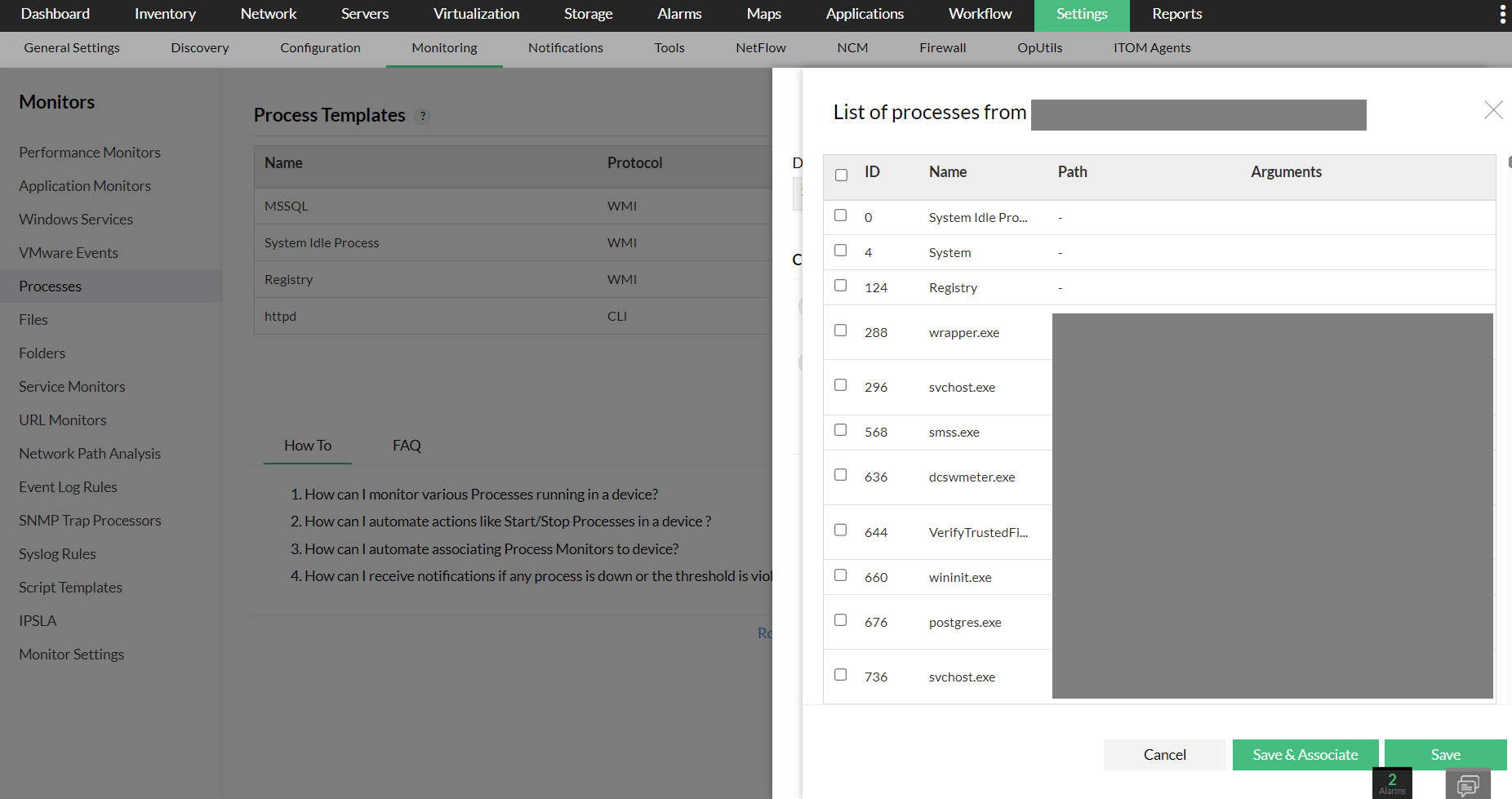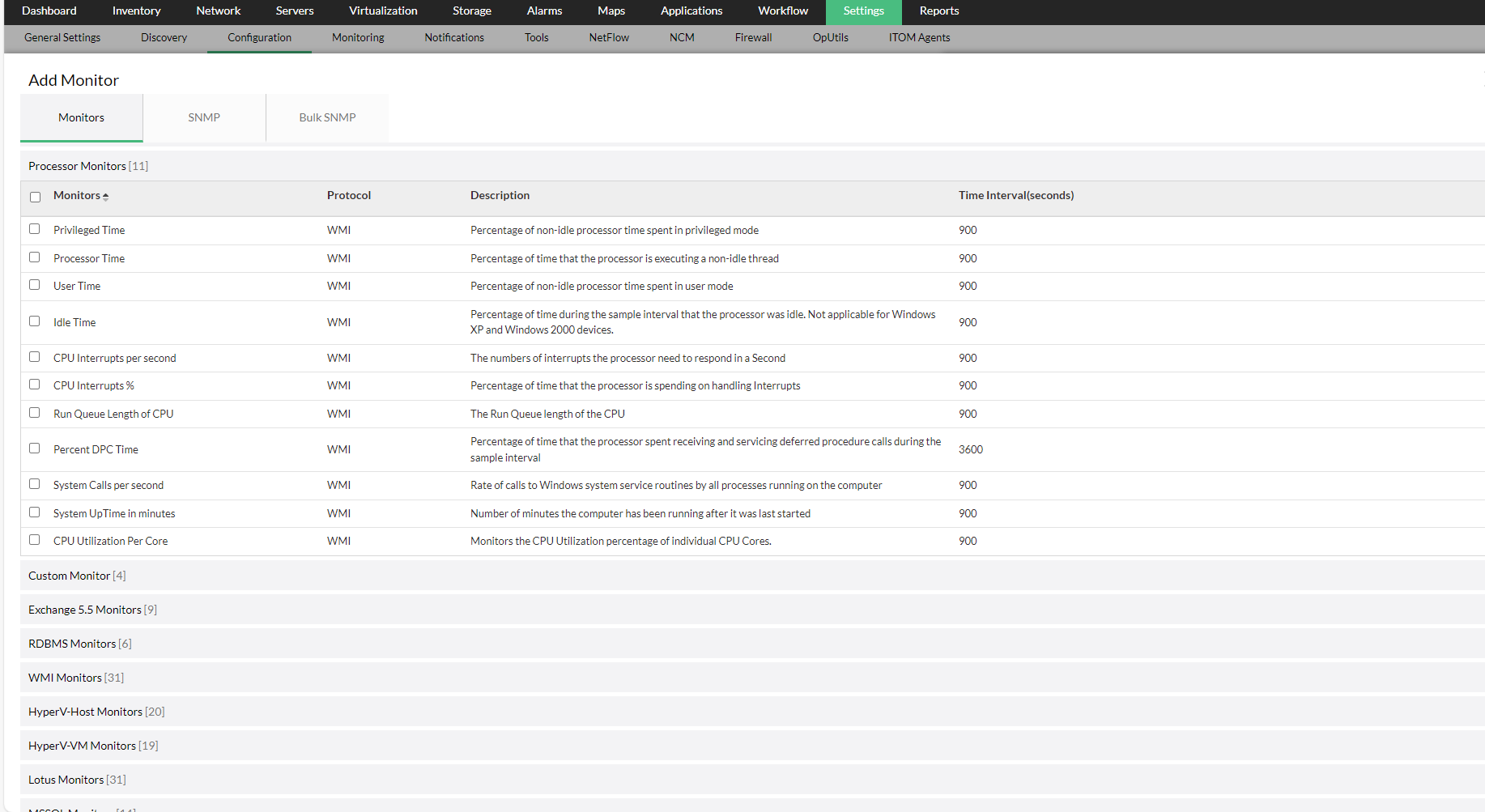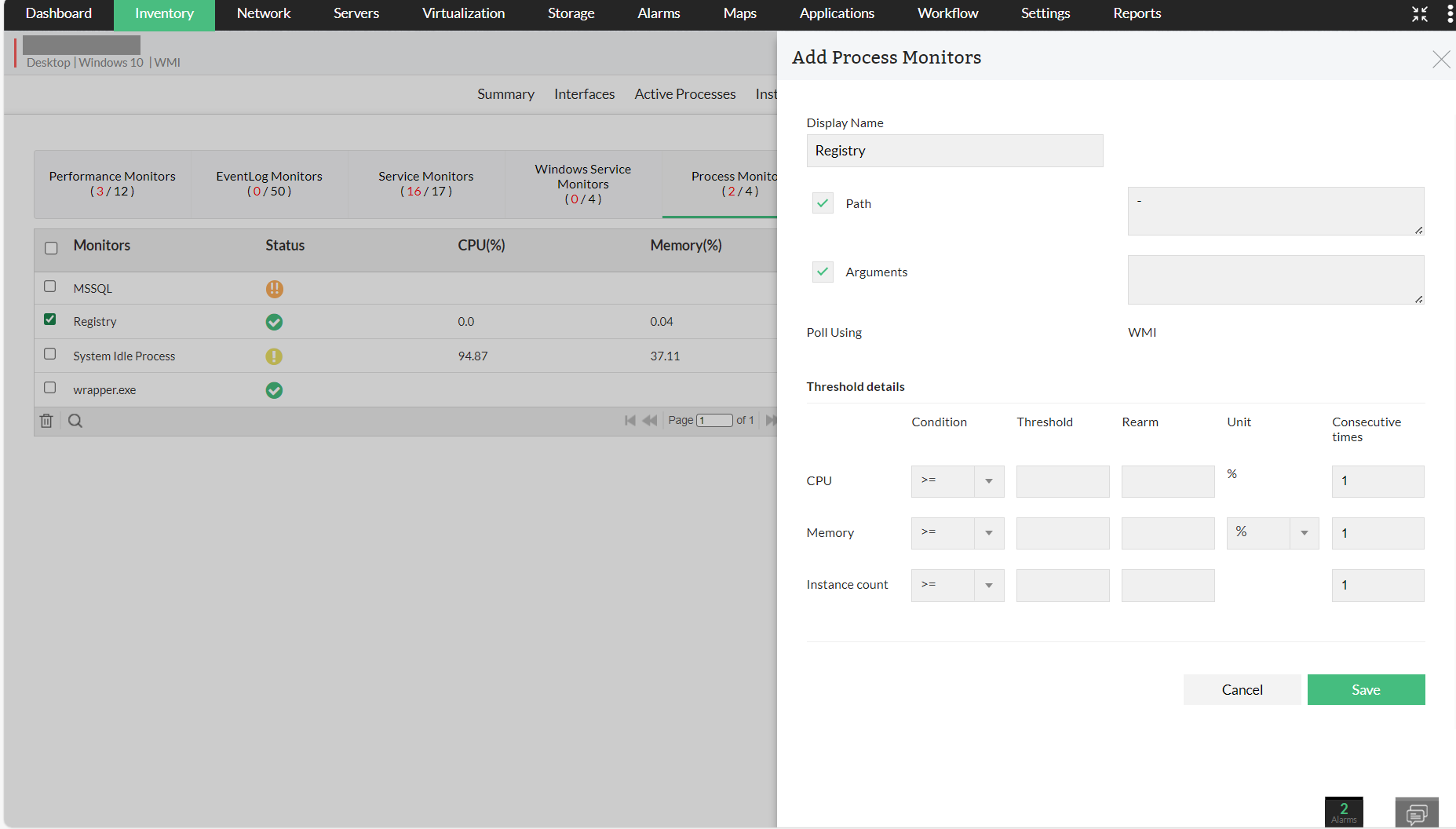OpManager's process monitoring provides out-of-the-box support for monitoring the availability of all the processes running on a Windows or Unix system. Windows systems use WMI and Unix systems use CLI to monitor the processes that are running on a system. We also support SNMP in the Server/ Desktop and Domain Controller categories.
A process monitor can be associated to a device in one of the following ways.



You can set resource thresholds for the Process Monitor. Once a resource (CPU/memory) utilization by a process exceeds the configured threshold, an alert is triggered.

Alerts are triggered based on the above settings.
You can also view active processes on a device and process diagnostics against a system resource. We currently support active processes for SNMP/WMI/CLI protocols.
Thank you for your feedback!